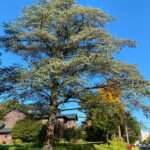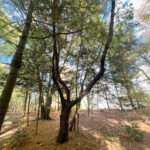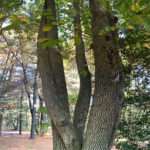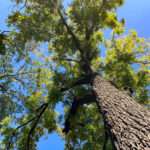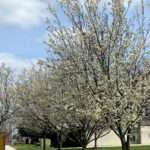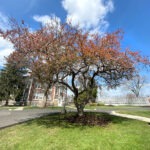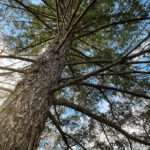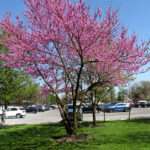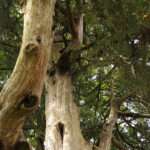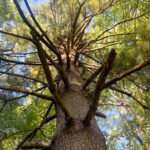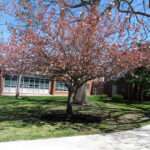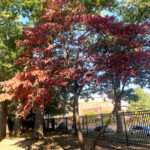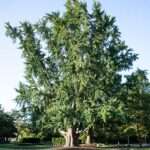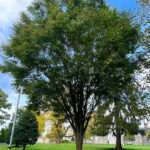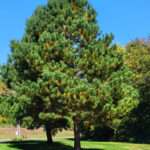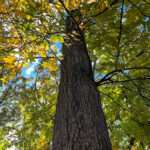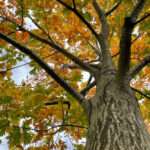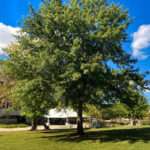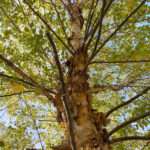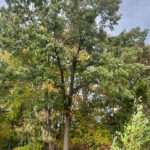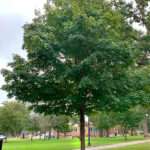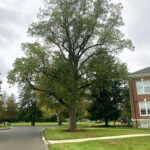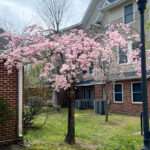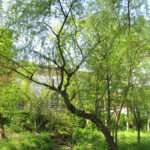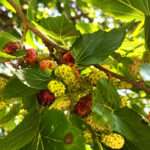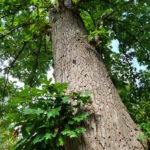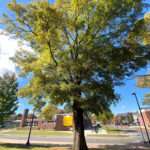Meet Our Trees
Explore the catalog of tree species at Rowan University Campus Arboretum on the Glassboro campus. Each tree was researched by students, for students and the public, including information about native people, questions to inspire future research, and additional recommended resources. We hope you will learn more about the unique species that share our community!
Did you know? Our campus has:
-
- Over 2,000 individual trees
- Approximately 100 different tree species on campus
- 10 Oak species, 8 Maple species, and 7 Pine species
- Numerous trees that predate the Rowan University campus
- An (unfortunate) abundance of the invasive Callery Pear
Explore our trees below
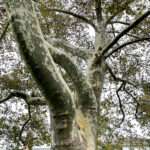
American Sycamore
This native tree species evolved over 100 million years, and individual trees can live up to 600 years. This particular tree is large and has been a part of Rowan’s Glassboro campus for years. If you can touch the bark of the tree …| Learn More
Atlas Cedar
Named after its home, this tree species is native to the Atlas Mountains that span Northern Africa – found in the countries of Morocco and Algeria. It was first introduced to the United States in 1845. Sometimes they are referred to … | Learn More
Black Cherry
This species is native to the Eastern United States and is commonly known as the black cherry tree. Individual trees can grow between 1.5-2.5 feet per year, reaching heights of 49-79 feet. As the black cherry tree ages, the … | Learn More
Black Tupelo
The Black Tupelo tree species, also known as the Sour Gum species, includes the oldest living non-clonal flowering plant in Eastern North America. The oldest living tupelo has existed since 1448, which is actually 44 years before … | Learn More
Black Walnut
This native tree can grow to heights of 100 feet and can live for more than 250 years. The black walnut is found spanning almost the entirety of the Eastern half of the United States; it is one of the most prized North … | Learn More
Callery Pear
During early spring, make your way to one of the Callery Pears to see the tree’s showy ornamental white flowers. Look carefully for a flower with five petals each with an unpleasant smell, that would be a Callery pear … | Learn More
Crabapple
This tree is also a member of the larger Rosaceae Family, also known as the Rose Family. This family contains a startling number of species, so there’s a good chance that you have eaten food from this family recently. Aside from … | Learn More
Douglas Fir
The Douglas Fir is native to Western North America and is commonly found in cool, moist environments. This tree is shade tolerant and is most abundant at elevations between 5,000 to 8,000 ft. The Douglas Fir grows best in … | Learn More
Eastern Redbud
Belonging to the Fabaceae family, or the legume family, this native tree species is found throughout woodland areas along the east coast. It can stretch from New Jersey down to Florida, and all the way west to Texas. Eastern redbuds are … | Learn More
Eastern Red Cedar
These trees typically inhabit the eastern part of the United States, and are usually found east of the 100th mediterranean. They also span into the southern tip of Quebec and Ontario and are native to all of these areas … | Learn More
Eastern White Pine
The Eastern white pine is native to North America and is distributed all around the world. They are found anywhere from central to eastern parts of Canada and the United States. You can also find these trees in Europe … | Learn More
Flowering Cherry
The flowering cherry tree is a member of the Rosaceae Family, which you might know as the rose family. This family of flowering plants is characterized by woody trees, shrubs, and sometimes herbaceous plants. | Learn More
Flowering Dogwood
This tree species is often planted in locations as an ornamental because of its attractive white or pink blooms. Flowering Dogwoods are native to most of North America and are found in varied climates, from Canada to East Texas. | Learn More
Ginkgo biloba
This species is known as a living fossil because it has existed largely unchanged for 200-250 million years – since the days of dinosaurs. It is the single remaining species of a larger group – the Ginkgophyta. To much of the world …| Learn More
Japanese Zelkova
This tree is not native to our area and was introduced in America in 1862. It is known to live in temperate regions, and commonly found along many city streets as a “shade tree” as it tolerates urban conditions well. It was originally … | Learn More
Loblolly Pine
This tree species is a member of the Pinaceae family, which includes many other pine trees that you can see right here on campus, and it can grow in a wide range of habitats. Loblolly pines are hardy and able to withstand … | Learn More
Mockernut Hickory
The Mockernut Hickory is a native tree species that can be found in Eastern and Central America. It is often planted in parks or planted as shade in open areas. Looking at the tree, you can see its intricate looking bark. | Learn More
Northern Red Oak
The Northern Red Oak tree species is known for its dark reddish gray-brown bark with scaly broad, thin, rounded ridges. The ridges have shiny stripes running down their center. This tree also exhibits distinct leaf characteristics. | Learn More
Pin Oak
Pin oaks are commonly found in North America, from southwestern New England and Midwestern states to Ontario, Canada. Appropriately called a swamp oak, this species enjoys wet riparian environments and tolerates poorly … | Learn More
Purple Leaf Plum
Like many ornamental plants, the purple leaf plum is not native to the United States. They originate from western Asia and were brought to southeastern Europe in the 1800s. Their close relative, the garden plum, Prunus domestica, …| Learn More
River Birch
This beautiful species of tree belongs to the family Betulaceae which also includes five other groups of deciduous nut bearing trees and shrubs. If you encounter this tree in its natural habitat you will notice that, river birches enjoy …| Learn More
Southern Red Oak
This species is thought to have evolved some 56 million years ago and is native to the United States. You can find them growing anywhere from New Jersey down to Florida and over west to Texas. The southern red oak is also called ... | Learn More
Star Magnolia
Star Magnolia can either be grown as a large shrub or pruned into a small tree, like the tree featured here. A healthy Star Magnolia will grow 15-20 feet tall with a canopy ranging between 10-15 feet, which makes them ideal … | Learn More
Sugar Maple
The scientific name of the sugar maple tree is Acer saccharum. “Saccharum” is Latin for “sugar.” The sugar maple tree is known for the use of its sap , which is used to produce maple syrup. It takes 40 gallons of sap to make … | Learn More
Tulip Tree
The species is commonly known as the tulip tree due to the cup-shaped, tulip-like flowers that it produces in late spring. If you are visiting this tree between April and June, you might be able to spot the flowers in the canopy or notice one that has fallen to the ground. Other common names for this tree include … | Learn More
Weeping Higan Cherry
The Weeping Cherry is a deciduous tree, which means that it loses its leaves as the seasons change. In the spring and summer, the leaves are a bright green, and then they turn yellow in the fall before they drop in preparation … | Learn More
Weeping Willow
The weeping willow tree is characterized by its silver colored bark. The wood from this tree also tends to be rather fragile compared to other trees. This tree does not grow very tall, instead maxing out between 30 and 50 feet … | Learn More
White Mulberry
White mulberry trees, also known as silkworm mulberries, are native to Northern China, where they are used for producing silk. They were introduced into Europe in the 1500’s before being brought to the United States … | Learn More
White Oak
White oaks are known to be one of the major oak species that reside in a majority of the hardwood forests of Eastern and Southern North America. White oak trees are tall, sometimes growing up to eighty to one hundred feet … | Learn More
Willow Oak
The willow oak can grow up to 40-75 feet tall and 25-50 feet wide. Their large size can make them susceptible to wind damage. Willow oaks tolerate urban pollution, and can survive in any type of soil, including clay. The willow oak has … | Learn More
Resources About Trees
Books
-
- Trees of Eastern Northern America written by Gil Nelson, Christopher J. Earle, Richard Spellenberg, Amy K. Hughes, and David More
- Trees of Western North America by Richard Spellenberg
- Trees of Pennsylvania, the Atlantic States, and the Lake States written by Hui-Lin Li
- The Illustrated Encyclopedia of Trees written by David More and John White
- The Sibley Guide to Trees written by David Allen Sibley
- Trees: An Illustrated Identifier and Encyclopedia written by Tony Russell and Catherine Cutler
For more books on trees visit the Resources About Trees page!
Journals
You may need to log in with Rowan University credentials to view these items
Journal Articles
-
- Li L, Yu Z, Bebout GE, Stretton T, Allen A, Passaris P. (2010). Tree-ring width and δC records of industrial stress and recovery in Pennsylvania and New Jersey forests: Implications for CO2 uptake by temperate forests. Chemical geology. | Link (Rowan Login Require)
- Geng Y, Dighton J, Gray D. (2012). The effects of thinning and soil disturbance on enzyme activities under pitch pine soil in New Jersey Pinelands. Applied soil ecology : a section of Agriculture, ecosystems & environment. | Link (Rowan Login Require)

